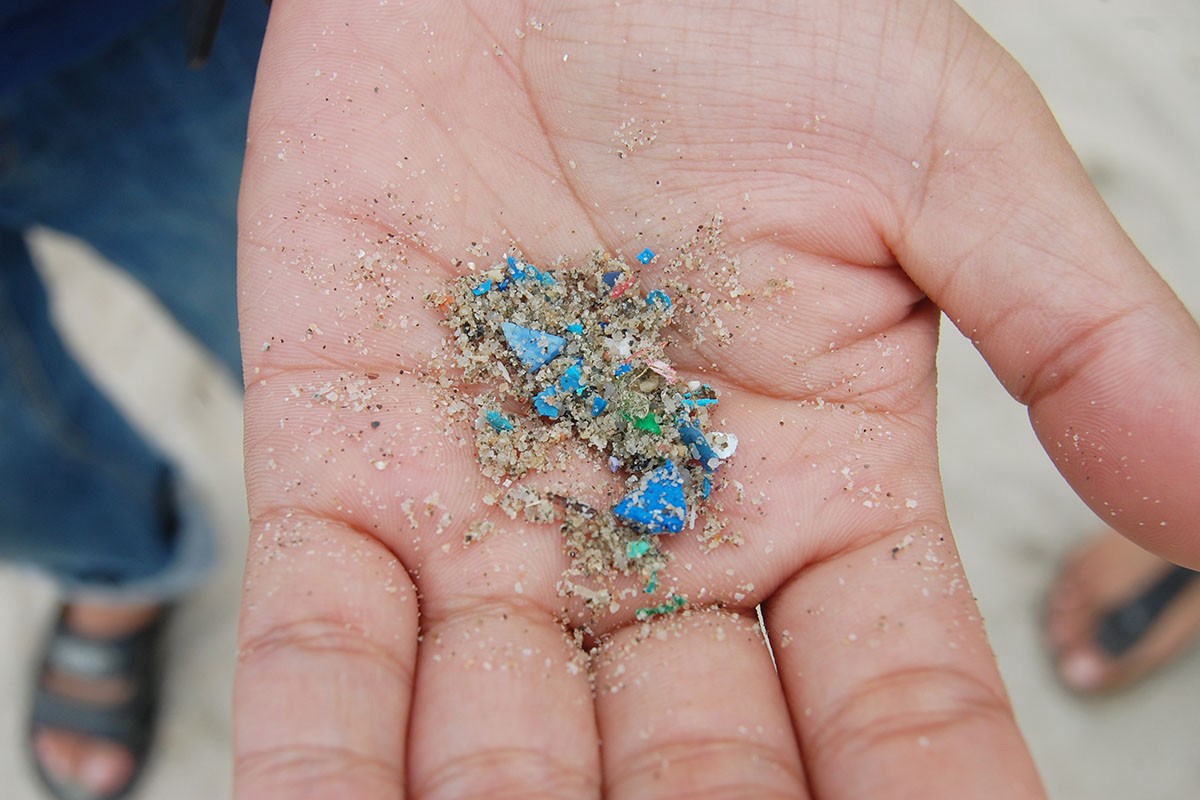A newly published study shows that exposure to polystyrene microplastics has endocrine-disrupting effects and negative effects on fertility.
The study of mice showed that the effects, while serious in males, were even more serious in females.
With each passing week we learn more about the threat posed to health by microplastics, which now pollute the earth so ubiquitously that they are being treated as a “force of nature” in their own right.

Microplastics: hormonal and reproductive effects

The new study, conducted at Central China Normal University, focused on the effects of microplastic exposure on hormone levels and fertility among mice.
In this study, male and female C57BL/6 mice were exposed to saline or 0.1 mg/d polystyrene microplastics for 30 days or 44 days.
Some of the mice were then caged for 10 days to mate to test fertility.
Another group of mice were given fluorescent polystyrene microplastics to determine the accumulation of MPs.
Overall, the results show that exposure to polystyrene microplastics resulted in more significant accumulation and oxidative stress in the ovary than in the testis.
PFAS, ubiquitous greaseproof chemicals, drive growth of cancer: scary new study

A new study suggests that exposure to PFAS, a class of greaseproof chemicals that are found in food wrappers, nonstick cookware and other products, in combination with a high-fat diet drives the growth and spread of tumours.
The chemicals were shown to drive both benign and malignant prostate cells into a state that allowed them to proliferate at three times normal speed in mice. When a high-fat diet was added to the mix, the rate of tumour development was significantly accelerated.
This isn’t the first time that PFAS have been in the news in recent months for their detrimental effects on health.
A symposium of academics and experts was held to discuss the effects of PFAS. The symposium featured scientists, engineers and regulatory professionals from public, private and academic institutions. The participants called for new ways to detect these chemicals and more studies to understand the risks they pose to humans.
These entirely man-made chemicals have been used since the 1940s, and although some states have now enacted legislation to restrict the use of PFAS, their ability to persist in the environment means the compounds that already exist will continue to contaminate the environment.
CLICK HERE TO READ MORE ABOUT THESE WORRYING FINDINGS
In male mice, the number of viable epididymis sperm and spermatogenic cells in the testes after exposure was significantly reduced, and the rate of sperm deformity increased.
In female mice, exposure induced a decrease in ovary size and number of follicles.
After exposure, the levels of follicle-stimulating hormone, luteinizing hormone and testosterone were reduced, and the estradiol levels increased in the serum of male mice, while the changes in these hormone levels of female mice was the opposite.
The mice exposed to polystyrene microplastics had a reduced pregnancy rate and produced fewer embryos.
The findings clearly suggest that exposure to polystyrene microplastics, damaged the testes and ovaries, induced oxidative stress, altered serum hormone levels, and induced changes in reproduction and fertility.
Female mice appear to be more susceptible to such negative effects than male.
Microplastics and the human fertility crisis
It’s already well known that microplastics are carriers of toxic xenoestrogens, industrial chemicals that have disastrous gender-bending effects.
These chemicals are believed to be one of the principal causes of a calamitous decline in fertility that could bring about the end of human reproduction as we know it.
By 2045, according to Professor Shanna Swan, the majority of men may no longer be able to reproduce because of the effects of harmful chemicals from a variety of common household sources.
“We’re about 40 years behind global warming, in terms of awareness,” she says – yet the threat to human survival is just as great as, if not greater than, our concerns about greenhouse gas emissions.
According to Swan’s projections from the available data, by 2045 the sperm count of the median man will reach zero – meaning that one half of all men will have no sperm at all, and the other half will have an amount that is barely more than zero. Functionally, all men will be infertile.
The implications should be obvious: no sperm, no babies. Such a scenario has already been dubbed ‘Spermageddon’.
The last resolution you’ll ever need to make…
Gone are the endless failures — now it’s time to make a stand, once and for all.
Do you need to:
hone your discipline
build muscle
lose fat
transform your body
ingrain GOOD habits
quit your vices
improve your relationships
boost your confidence
become more attractive
be a better person?
Well, this bundle has it ALL.
CLICK HERE TO CHANGE YOUR LIFE FOR THE BETTER – FOREVER!
But it’s not just xenoestrogens that are responsible for the precipitous decline in male fertility we’re witnessing. Swan also points to a variety of other factors that seem to be at work, including the use of contraceptives, obesity, smoking and ‘cultural shifts’, a rather vague term which would deserve further explanation.
Could it be that as men behave – or are given less room to behave – in less stereotypically manly ways, they may actually become so?
There may be other biological factors at work too, she suggests, pointing to the collapse in testosterone levels in western men over the last half century.
While a reduction in testosterone levels is a fact of life for all men as they age – after the age of 30, a man can expect to lose 1% of his natural testosterone every year for the rest of his life – this natural reduction pales in comparison with the society-wide collapse in T levels that has occurred over the second half of the twentieth and the first quarter of the twenty-first century.
Men today have considerably less T than men of the same age even a single generation ago. A 2007 study in the Journal of Clinical Endocrinology and Metabolism showed a significant reduction in the T levels of men since the 1980s. A 60-year-old American man in 2004, for example, had 17% less testosterone than a 60-year-old American man in 1987.
While the collapse of testosterone is likely to be linked to the ubiquity of the xenoestrogenic chemicals Swan warns about, sedentary lifestyles and the consumption of phytoestrogens are also likely to be playing a large role.
All in all, it adds up to a witch’s brew of environmental, social and biological factors that are making it ever harder for men to maintain their masculinity and fulfil their biological purpose.


Don’t hesitate to email us at [email protected] for personalized coaching and a client questionnaire if you’d like DEDICATED tailor-made personal training on strength training, building muscle, losing fat, developing athleticism, and more — all to your liking, lifestyle, habits, and taste!
Otherwise, don’t forget to claim your FREE eBook detailing how to lose 20lb of fat while building muscle in 12 weeks! You can claim it here.
Alternatively, you can pick up a FREE eBook on fundamental strength principles offering an introductory workout program.











